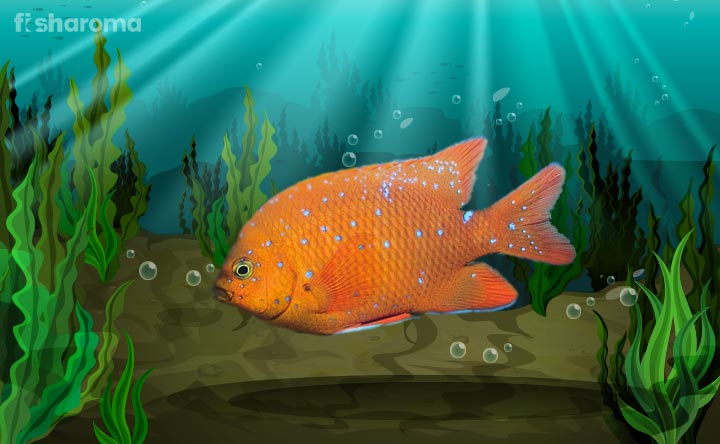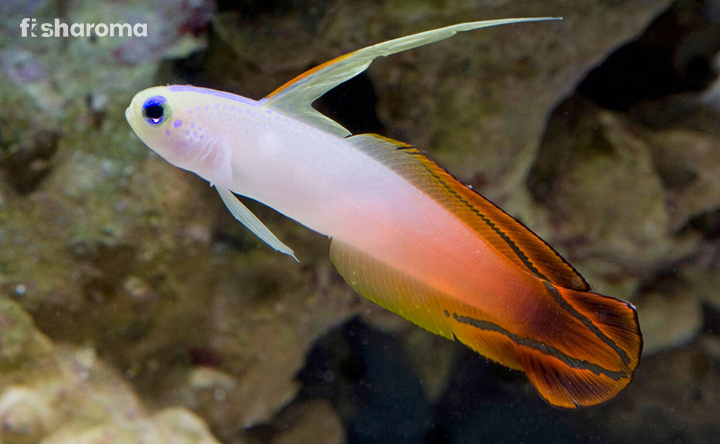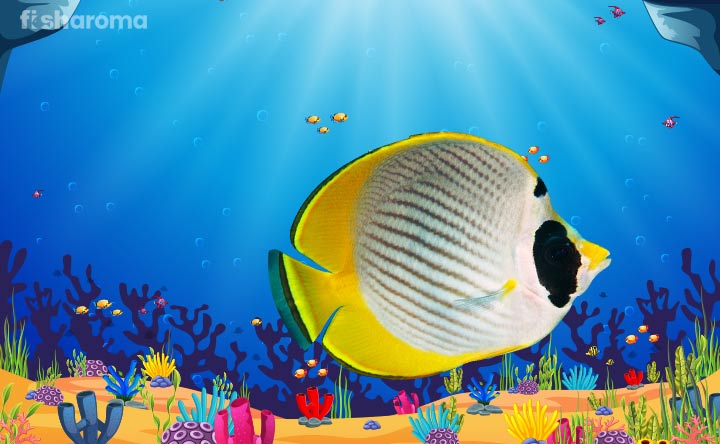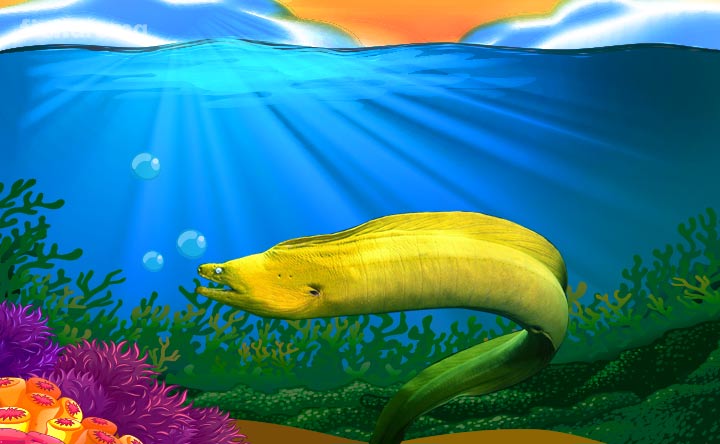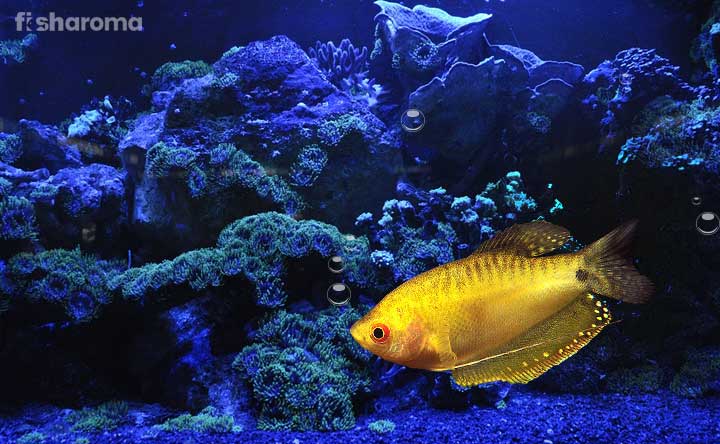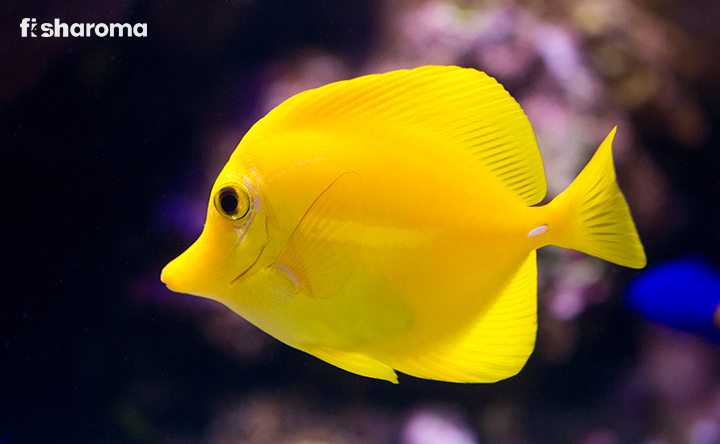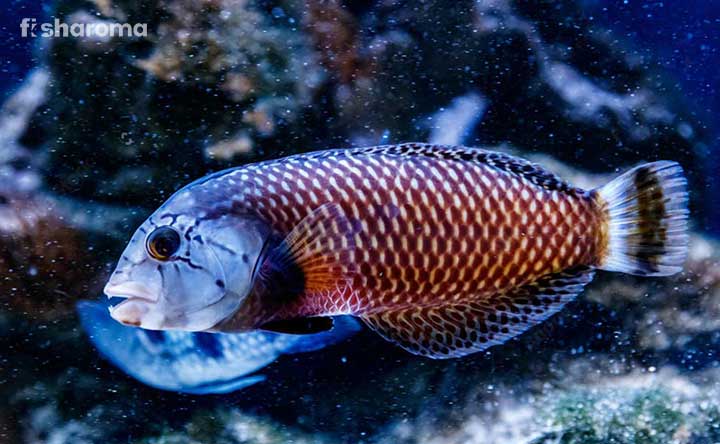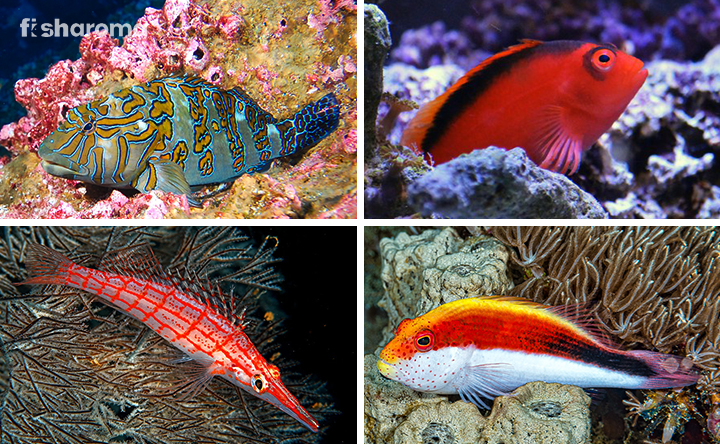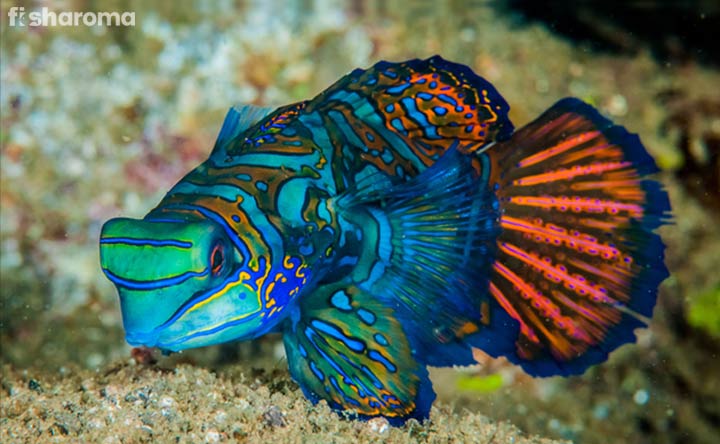A Thorough Study On Dwarf Lionfish Behavior, Care, And More
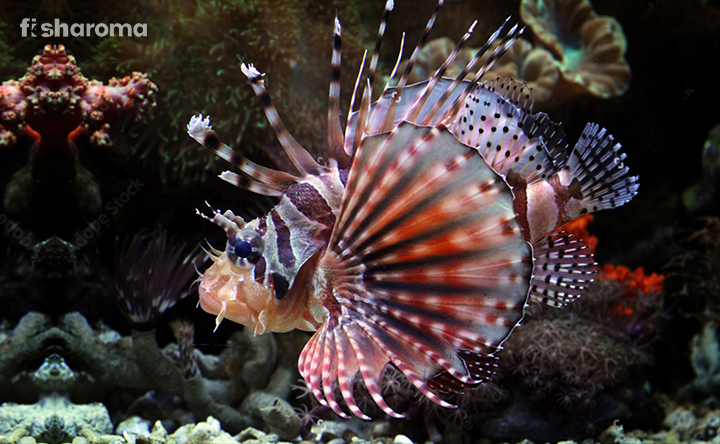
- Origin and Habitat of Dwarf Lionfish
- Appearance of Dwarf Lionfish
- Behaviour of Dwarf Lionfish
- Lifespan of Dwarf Lionfish
- Diet of Dwarf Lionfish
- Tank Requirements for Dwarf Lionfish
- Water Type of Dwarf Lionfish
- Compatibility of Dwarf Lionfish
- Breeding of Dwarf Lionfish
- Diseases of Dwarf Lionfish
- Summary
The Dwarf Lionfish is a genus of saltwater or marine water fish groups. Their unique striped appearance might be intimidating for fish lovers, but once you get to know their requirements, they are not difficult to pet at all. They have multiple colour variants, each of them is pet-worthy.
Let us guide you through an elaborative study so that you can provide an optimum thriving condition for the glorious Dwarf Lionfish. Remember, their vibrancy of shade is at its prime, only when everything is provided for.
Here, some information is given in both table and detailed format, read on!
Key Specifications of Dwarf Lionfish
| Other Names | Shortfin Turkeyfish |
| Origin | Indo-pacific water |
| Lifespan | 3-5 years |
| Colours | Mostly brown, white, and red |
| Temperament | Aggressive |
| Size | 6-6.7 inches |
| Diet | Carnivore |
| Family | Scorpaenidae |
| Compatibility | Loner |
| Reproduction | Egg-layers |
| Maintenance Requirements | Moderate |
| Tank Size | Min 55 gallons |
Overview
The Dwarf Lionfishes are venomous, aggressive and predatory fishes, preferring to stay alone. Their alluring colour combination is such that you can’t get enough of them. They are comfortable with a carnivorous diet and prey on fishes and crustaceans in the wild. They are not known to be avid swimmers, rather Dwarf Lionfishes are stationary most of the time. It comes in four different variations(species), of which we will talk later in the appearance section.
Origin and Habitat of Dwarf Lionfish
Native to the Red Sea, a part of Indo-Pacific regions, this fish has invaded the water lands of Atlantic regions. The invasion has become so extensive, that they are found in the invaded waters more than their place of origin. Presently, they are found in the Arafura Sea, Caribbean Sea, Mariana Islands, Tonga, Samoa, and Japan provinces.
The saltwater fishes are indigenous to shallow waters, laden with rocky beds, lagoons, and muddy surroundings. They are mostly found inside crevices and caves.
Appearance of Dwarf Lionfish
The forked and irregular fin patterns along with striped colourations make them distinctive. Their distribution includes a wide range of locations, based on which they are differently coloured but remaining the same in terms of their shape and size. It might be their adaptation, but the appearance helps them camouflage with the surroundings.
Size
The small fish has a standard size of 6-6.7 inches.
Colour
The Dwarf Lionfish exhibits a huge impact on the habitat on its colours. Their usual colouration is brown and white stripes, although the shades can be darker or lighter in each fish. The colour combination on the fins is always brighter than that of the bodies.
Types of Dwarf Lionfish
- Fu Man Chu Lionfish (Dendrochirus biocellatus) – This variation has bright orange and red combinations with black spots and uneven patterns. These are characterized by two large whiskers, exclusive to this species. Their unique pectoral fins resemble Spanish fans.
- Dwarf Fuzzy Lionfish (Dendrochirus brachypterus) – The fish commonly has three variations of colors like brown, red, green and yellow (extremely rare). This is an ideal pet with immense capability of acknowledging its owner’s presence, and even cutely waiting for the owner to feed it.
- Hawaiian Lionfish (Dendrochirus barberi)– The green species is known for being exceptionally beautiful. Due to its colors, divers have named them as Green Lionfish.
- Zebra Turkeyfish (Dendrochirus zebra)– This fish is small, exhibiting spotted patterns on its body. Like its cousins, they hide inside caves and rocky surfaces.
Behaviour of Dwarf Lionfish
Most of the time, Dwarf Lionfishes prefer hiding in crevices, camouflaging under the sandy or rocky base of the sea. They are not swimmers at all, rather crawlers or even “walkers” if they can be termed so. The reason being, they need this undercover appearance, just to be invincible to their potential prey. Instead of chasing, they are comfortable in suddenly catching smaller victims off their guard.
Seclusion is another condition, where most of such fishes find solace in. They are essentially loner but not territorial in the wild. However, they can adapt to cohabit with other fishes inside the aquarium.
In a homely set-up, you can’t tell that they are mighty ambush predators from their gentle nature. They are also extremely strong, in terms of their health conditions and the most amazing thing is the fishes’ eating capability.
Lifespan of Dwarf Lionfish
A Dwarf Lionfish can live for 10 long years.
Diet and Feeding of Dwarf Lionfish
The carnivore fish consumes any living things that they capture. Their petite bodies are deceptive because when they open their mouth, it is quite big and it can devour much larger prey, so, anything that can fit into it will be their food. While caring for one such fish in your home, provide live foods for the fish at first, for around 1 month, because they take time to get adjusted to frozen meals. Since they hide in caves at the bottom of the tank, you must give food at certain levels that are visible to the fish, otherwise, they won’t usually come out to eat.
However, introduce the fish with frozen items through some classic techniques mentioned here. You can (though we don’t recommend) starve the fish for some time (make sure it doesn’t die or get sick). Then slowly give some meaty items on a tray and then lower down the tray or anything you will place the food on, towards the surface. You can move the food from time to time, in front of the fish, compelling the fish to think of it as live prey. The fish will notice and come to satisfy its hunger and gradually identify this as a potential food option.
They don’t get to eat every day in their natural habitat, so you can give food on alternative days to prevent your glutton fish from getting obese.
Some of the food options for Dwarf Lionfishes are
- Shrimps
- Lobster tails
- Squids
- Small crabs and other crustaceans
The venomous fish can cause some major skin rashes to your hands, so never put your hands down in the aquarium without any proper gloves or cover on it.
Tank Requirements of Dwarf Lionfish
The small fish can be kept inside a small or nano tank, instead of a big one. But for housing multiple fishes, breeding or any other purposes, you can place them in medium-sized overhung tanks. Basically, you can set up a saltwater aquarium, but for more precision, you need to provide a reef or coral structure inside the tank. Just to make it feel like the fishes’ natural habitat. For that matter, a reef aquarium is an excellent option.
Tank Size
The usual tank size for a Dwarf Lionfish is 55 gallons. However, if you think you can place a larger one, then 75 gallons of the aquarium is also good.
Tank Lid
A tank lid should be placed, so that no outside thing can pollute the tank water, or harm the fish physically.
Substrate
The fish usually stays at the bottom, but that doesn’t make it choosy or picky about particular surface requirements. Since they come from a rocky surface in the wild, imitate that environment by providing some reef or coral beds inside the tank. Place crevice-like formations here and there and the fish will be calling it home soon.
Filter
The tank needs to be well-filtered and airy.
Lighting
Place subdued lights as bright ones might harm their eyes. Some fishes can suffer from stress if there are too many lights surrounding them. Generally, they are not finicky, but you should always exercise this caution to protect your Lionfish.
Presence of Flora
There is no particular need to incorporate specific plants, as the usual rocky and uneven structures of a reef aquarium will be good enough.
Cleaning Methods
The fish is likely to produce waste frequently, so cleaning is an obvious solution. Also, the rock or coral should also be cleaned, ensuring the safety of the fish. The fish is messy when it comes to eating, so removing all the leftover food particles is strongly recommended.
Water Type of Dwarf Lionfish
The Dwarf Lionfish is a saltwater fish so it should be kept inside a tank, maintaining a salinity level of 1.025. They can withstand a little fluctuation, but not to a great extent.
Temperature
The viable temperature range for these fishes is from 22.7-28.8 Degree Celsius.
pH Level
Provide a pH level of 8.1-8.4 to make the fish comfortable.
Mineral Level
The ammonia and nitrite parameter should be 0ppm but the nitrate can be from 0 to 20 ppm.
Replacement Procedure
The water change is a mandatory thing because these fishes have excess bioload. The water should be plenty inside to dilute the waste, hence preventing the water change procedure from being a daily affair.
If you have a reef tank containing 55 to 90 gallons of water, you can change 15% of the water on a biweekly basis. For bigger tanks, with more than 100 gallons of water, 10% of the water should be changed biweekly.
For fish tank owners, (not to be confused with the reef tank), the water replacement procedure is slightly different. A standard aquarium with a capacity of holding 55 to 90 gallons of water needs a minimum of 20% to a maximum of 30% of water replacement in a month. Aquariums with 100 gallons or more water capacity, should either have a lesser amount of water replacement in a month or the same quantity of change for a comparatively extended period. You may replace 20% to 30% of water change every 6 weeks.
Compatibility of Dwarf Lionfish
These fishes do not have any problem staying alone. But since they are inactive most of the time, from an owner’s perspective, teaming them up with other fishes is quite an obvious choice, and here lies the catch. Their unique nature makes them both aggressive and shy, and finding similar fishes is a challenge.
Suitable Tankmates
The trick is to find bigger tankmates for a Dwarf Lionfish that can’t be consumed by it. But the bigger ones like Moray Eels and such might harass the Lionfish in return. So, it is usually best to keep the Lionfishes alone. Even with their cousins, they become aggressive and fighting can lead to injury. However, a male Dwarf Lionfish can stay with a harem of 5-6 females of its own kind.
Unsuitable Tankmates
Almost every species is unsuitable for a Dwarf Lionfish as the comparatively smaller companion fishes will either be the victim of its greedy eating or it itself will be a point of a target for bigger species.
Some of the examples are given below,
- Moray Eels
- Rabbitfish
- Pufferfish
- Small invertebrates and crustaceans like crabs and shrimps
Breeding of Dwarf Lionfish
The difficult-to-breed Dwarf Lionfish makes it hard for new breeders. However, spawning is not impossible and as the breeding time approaches the male starts looking for female fishes. The latter showcases whitish shades on their gills and bellies. Once the female starts carrying eggs and shows interest in a particular male, then the fertilization starts. The eggs are mucus-clad and have a texture similar to gelatin. The eggs take around 36 hours to hatch.
Diesease of Dwarf Lionfish
These fishes are generally healthy and do not easily fall sick. Still, that should not be taken for granted. Look out for any symptoms that seem odd like loss of appetite, irregular resting patterns, and restlessness. Consult a veterinarian if your Dwarf Lionfish shows any of such signs.
Summary
The entire genus of a Dwarf Lionfish includes some majestic looking fishes. The saltwater fish comes with a package of enthralling natural traits and variations.
Their needs, care, and habits are similar with some exceptions (based on the species). The venomous Dwarf Lionfishes are not energetic or agile and most of the time you will find them staying at the bottom. Mostly around dawn and dusk, they come out, but all these are their natural habits. In captivity, a single fish can change its inborn behaviour, given the treatment it receives. The fishes are composed and content with themselves, without needing any companionship, apart from the breeding time.
So, why are you waiting? Let’s get one and you will find all the guiding information in our article.
Some Similar Care Guides
Here are some similar saltwater species and popular pet options, you might like to read about
- Spotted Garden Eels: The saltwater fish is a peaceful pet species. It has a long lifespan of around 40 years in the wild.
- Green Chromis: The unique-shaped green fish is omnivorous by habit. Their peace-loving nature is always appreciated by fish enthusiasts.
- Mandarinfish: The colourful fish is hardy but a bit fussy when it comes to food. However, their vibrant colouration makes them so desirable amongst aquarists.

